Chinese chestnut, Castenea mollissima
Chestnuts are falling, autumn calling…
Mark Heathcote
True chestnuts are in the genus Castanea, which worldwide includes only eight or nine different species of deciduous trees and shrubs. Here at Mount Auburn we grow Chinese chestnuts, Castenea mollissima. In October you may come upon the curiously noticeable fruits (nuts) on the ground beneath these trees. Noted plantsman Michael Dirr in his Dirr’s Hardy Trees and Shrubs aptly describes them, “The edible nuts are borne two to three together in a prickly structure not unlike a mini-porcupine.”  As with all plants, these fruits were preceded by their successfully fertilized flowers. Occurring mid-to-late June, each tree develops separate male and female flowers. The ornamentally visible male, or staminate, flowers are pale yellow or cream colored, cylindrically clustered along erect catkins, 3-to-8-inches long. These male flowers are very aromatic, although many say this odor is unpleasant. Separate less visible female flowers found at the base of some male catkins, may eventually produce the prickly burr covering the nuts.
As with all plants, these fruits were preceded by their successfully fertilized flowers. Occurring mid-to-late June, each tree develops separate male and female flowers. The ornamentally visible male, or staminate, flowers are pale yellow or cream colored, cylindrically clustered along erect catkins, 3-to-8-inches long. These male flowers are very aromatic, although many say this odor is unpleasant. Separate less visible female flowers found at the base of some male catkins, may eventually produce the prickly burr covering the nuts.
The nuts are prized edibles, and over time hundreds of cultivated varieties of Chinese chestnuts have been selected and introduced. The nuts have little protein or fat, and no gluten, and are primarily carbohydrates. Chestnuts are also used in Traditional Chinese Medicine (TCM) to improve blood circulation, prevent and improve high blood pressure, heart disease, and osteoporosis, in addition to other uses.
Sweet chestnuts lie upon the ground
They’ve fallen from the tree,
As summer ends and autumn nears
There’s nothing left for me…
-Andrew Blakemore
Chinese chestnut trees grow forty-feet tall and may be equally as wide. The alternate, 3-to-6-inch long, lustrous green leaves have a serrated margin, many culminating with bristle like teeth. Autumn color ranges from yellow to light bronze, and the leaves may persist on the tree long into the season, as do some oaks and beeches, which all are related within the FAGACEAE, or beech family.
…Stopped just at the roots of the great chestnut where the woodchuck’s burrow was,
froze, and the doe looked back over her shoulder at me for a long moment,…
-Robert Hass
While we do not grow other species of chestnuts, two other very similar species are worth mentioning. Sweet chestnut, Castanea sativa is native to southern Europe, western Asia and northern Africa, and has long been a staple subsistence food. Evidence of its cultivation dates back four millennia. It was repeatedly planted across vast geographic areas by Alexander the Great (356-323 BC) as well as by the Romans in ancient times. Today it remains a valuable export for Turkey, Italy, Greece, Portugal and Spain. Many Mount Auburn visitors regularly shop for these chestnuts just six to eight blocks west of Mount Auburn Cemetery, on Mount Auburn Street in Watertown.
O chestnut tree, great rooted blossomer,
Are you the leaf, the blossom or the bole?…
William Butler Yeats
Of course we must also mention the American chestnut, Castanea dentata, once the Queen of the eastern American forest trees, comprising up to 25 percent of the trees in the Appalachian ecosystem. Beginning in 1904, when a devastating host-specific, canker-causing fungi was first observed in the Bronx Zoo, the virulence spread rapidly. In 1908 1400 chestnut trees in Brooklyn’s Prospect Park were killed. Inevitably this destructive Asian fungi, Cryphonectria parasitica, (formerly Endothia parasitica), crossed state lines into New Jersey, Delaware, Maryland, Virginia and south to Alabama, Mississippi and Arkansas, in addition to all of the New England states. Susan Freinkel in American Chestnut: The Life, Death, and Rebirth of a Perfect Tree recounts this staggering loss, as well as the long and varied research, breeding, biological controls, and biotechnology used to try and bring back a species from the brink of extinction. Freinkel relates the cumulative magnitude of the blight, “All told it is estimated the blight killed between three and four billion trees. Three to four billion. Enough trees to fill nine million acres. Enough trees to cover Yellowstone Nation Park eighteen hundred times over. Enough trees to give two to every person on the planet at that time.”
With chestnut blight, my ashen crown
Looms remorsefully…
Karen Sinclair
The Chinese chestnut, Castenea mollissima and other Asian chestnut species evolving over time in coexistence with this fungal blight have a high degree of resistance, and suffer minimal damage when exposed. Herein our tree tragedy finds a ray of hope. By creating a hybrid tree from crossing a scarce surviving American chestnut with a Chinese chestnut, the resulting offspring will comprise an approximately 50/50 progeny. By crossing this hybrid once again with another American chestnut, and then crossing that progeny again with another American chestnut, and so on, this process is known as backcrossing. Backcrossing to a generation of progeny with 15/16ths American chestnut, might have introduced just enough resistance from the Chinese chestnut. There has also been considerable work using genetic bioengineering with a goal of inserting resistant genes into American chestnuts. The hope of introducing a close to resistant American chestnut, Castanea dentata appears before us. Of course only time will tell, but Freinkel quotes longtime chestnut researcher Dennis Fulbright, “It would be just like getting a gift from the heavens.” On your next visit to Mount Auburn look for our Chinese chestnut, Castenea mollissima on Hibiscus Path, Gladiolus Path and Cowslip Path.
I see again, as one in vision sees,
The blossoms and the bees
And hear the children’s voices shout and call
And the brown chestnuts fall.
Henry Wadsworth Longfellow
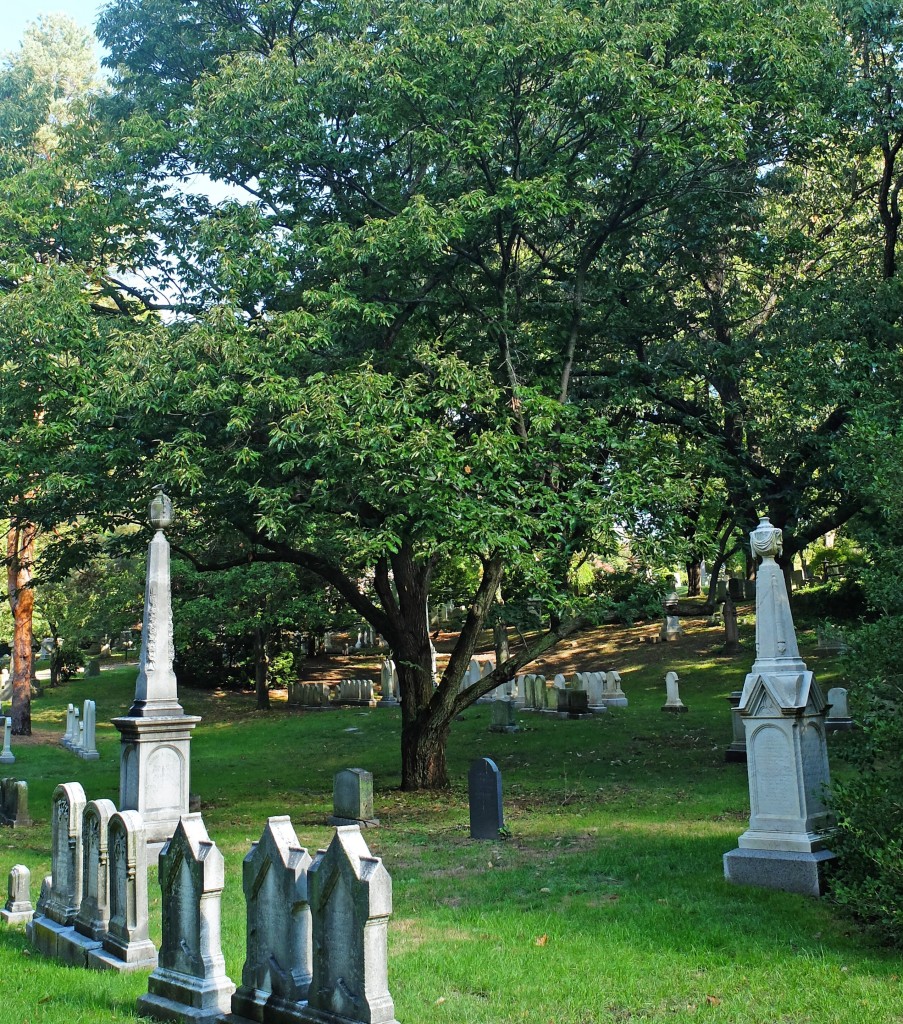

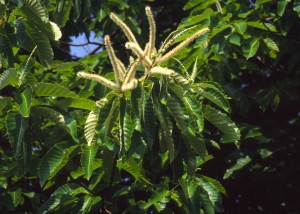
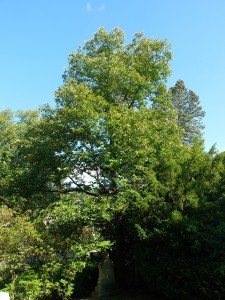
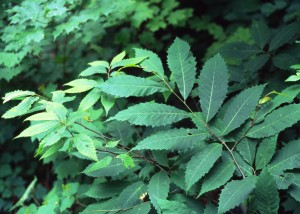

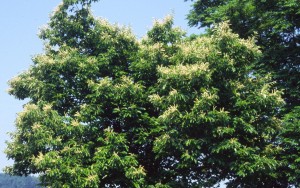
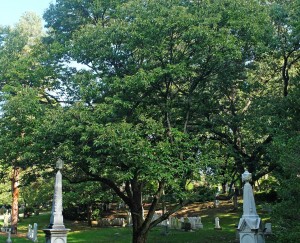
Leave a Reply